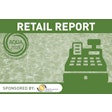
Steady as she goes. That old nautical phrase, urging a firm hand on the wheel and an unwavering eye on the compass, seems especially apt for today’s pool and spa retailers. The economic waters remain troubled as the nation emerges from a year in which business activity and consumer confidence fell short of what many had hoped. At the same time, an improved economic forecast should guide retailers to greater profitability in 2014.
“The economy is on the verge of stronger growth, more jobs and lower unemployment,” says Sophia Koropeckyj, managing director of industry economics at Moody’s Analytics, a research firm based in West Chester, Pa. After four years of recovery, she adds, the economy has made big strides. “Business balance sheets are as strong as they have ever been, the banking system is well-capitalized and households have significantly reduced their debt loads.”
Market Rebound
The more optimistic outlook is reflected by an anticipated rebound in the nation’s Gross Domestic Product, or GDP. That figure, the most commonly accepted indicator of economic health, represents the nation’s total annual revenues for all goods and services. The higher the GDP, the more likely shoppers will open their wallets wider and cash registers will ring more often.
So what’s the GDP doing now? In 2014 the nation’s economy is expected to climb at a 3.1 percent rate, according to Moody’s. That’s good news, given that the GDP increase for an economy in average growth mode is 2.5 percent.
“We think things should be looking up considerably next year,” says Scott Hoyt, senior director of consumer economics for Moody’s. “The economy should be significantly better not only than the past 12 months but also the past several years.”
Maybe it’s expected to increase rapidly, but the 2014 GDP number is being calculated off a pretty low base. Many retailers won’t be surprised to hear that 2013 did not measure up to economists’ expectations. Indeed, when numbers are finally tallied the GDP increase is expected to weigh in at around 1.6 percent for the year, well below the anticipated 2.1 percent rate. What went wrong? “Global weakening, which has led to much weaker growth in exports, and government dysfunction has resulted in weaker than expected growth,” says Koropeckyj.
Over the past 12 months, the nation was also weighed down by a fiscal drag that is not expected to be as severe in 2014. This drag consisted of the end of the social security tax holiday, the tax increases on upper income households, Obamacare-related tax increases and a significant reduction in government spending. “While there will be some fiscal restraint next year as well, we expect it to be reduced to a level that the underlying strength of the economy comes through,” Hoyt says.
Retail Sales Growth
So how are shoppers feeling about all this? Fairly optimistic, if current indicators are reliable.
“Core retail sales are expected to grow 3.8 percent by the time 2013 figures are finalized, and by 4.5 percent in 2014,” says Hoyt. That’s a pretty good showing, given that average annual core retail sales grew at 4.6 percent prior to the 2008 financial crisis. (Core retail sales exclude volatile revenues from auto sales and gas stations.)
Keep in mind, however, that these numbers are not as high as the 4.9 percent figure clocked in 2012 and the 5.4 percent of 2011. What’s going on? “A lot has to do with continued weak income growth,” Hoyt says. “While we do have some job growth, there is continued high unemployment. A lot of people have dropped out of the labor force, and employers have more power to restrain wage growth.”
No rapid relief in that sluggish employment picture is within sight. Moody’s expects the current unemployment rate of 7.3 percent to slowly decline to 6.7 percent by the end of 2014. A “full unemployment” 5.5 percent figure is not expected to be reached until early 2017. Until then, wages will be constrained.
Indeed, many consumers are still suffering from the restrained incomes characteristic of a sluggish employment market. “Some retailers have been telling me that shopping activity tends to fall off dramatically toward the end of each month,” says Walter Simson, principal of Chatham, N.J., -based Ventor Consulting. “This seems to indicate that many people are living hand to mouth. While they are willing to spend for what’s necessary, there’s a big part of the population that has no extra gas in the tank. This pattern has to be broken for any dramatic improvement to occur in the economy.”
Retail sales, though, should be bolstered by the improved condition of shoppers’ pocketbooks. Consumers have followed the banks in their drive to strengthen balance sheets. “Consumers have repaired their credit and are willing to put a little more on their credit cards,” says Simson. “But we will not go back to the days when people plunked down their cards unthinkingly.”
Housing Health
Retail shopping patterns should be assisted by the continued improvement of the housing market. “Foreclosures are working their way through the process and fewer homes are entering foreclosure,” Koropeckyj says. House price indexes are firming throughout the country. Indeed, they increased by 9.4 percent in 2013, up dramatically from the 2.8 percent increase of the previous year. That figure is expected to be 6.1 percent in 2014.
The median home sales price increased to $198,000 in 2013, up sharply from the $176,000 figure of the year before. In 2014, that figure is expected to be $225,000. All these figures can only bode well for retailers as consumers have more money in their pockets to spend.
“Looking forward, a major driver of faster growth will be improvement in the housing market,” says Hoyt. “It seems clear that we have worked off the excess housing inventory that was put in place during the bubble. Demand for housing is now outpacing supply. In 2013, that demand manifested itself in rising prices. As we move forward we expect continuing demand to lead to increased construction, and that can be a major source of jobs and income.”
Market observer Simson noticed a dramatic improvement in housing around the middle of 2013. “Especially in the northeast, which seems to be cooking, there are good prices and houses do not stay on the market long. People recognize that low mortgage rates will not be here forever. They see a four percent deal and realize it is a once in a lifetime opportunity. So they are saying, ‘Let’s do it now.’”
“Other parts of country are more mixed,” says Simson. “Much of the Midwest never had a housing boom so there are only pockets of overbuilding where condos are staying on the market longer. That will be cleaned up over the next year or so.”
Corporate Uptick
Shoppers and retailers alike are looking for relief from one major source: a rebound in hiring and investment by corporations. The good news here is that corporations are expected to rack up some robust sales in 2014, adding some much-needed heft to the economic environment. While corporate profits dipped to 3.4 percent in 2013, compared to seven percent the previous year, the decline is expected to be temporary.
“Corporate profits are down from 2012 due to weaker gains in manufacturing, financial services and mining,” says Koropeckyj. However, as those factors are overcome, corporate profits are expected to rebound to 7.3 percent in 2014. (To clarify, these corporate profit percentages are nominal, not percentage increases.)
Robust sales and profits mean that corporations will continue their habit of bulking up their balance sheets with accumulated cash. That can only be good news when they finally decide to spend their money on expansion, equipment, and bigger labor pools.
“An increase in business investment is one of the main drivers behind our forecast for a pickup in GDP growth in 2014,” Koropeckyj says. “After expanding 2.8 percent in 2013, real fixed nonresidential investment is forecast to grow nearly twice as fast (4.8 percent) in 2014. The outlook reflects our view that stronger domestic demand and less uncertainty will encourage businesses to deploy the substantial financial reserves they have built over the past several years.”
Koropeckyj notes that recent Federal surveys show businesses would like to pick up spending. “The average of the five surveys that ask this question about investment intentions six months hence has risen notably this year, more than doubling to a one and a half year high.”
A continuing low interest rate environment should encourage that spending. “Interest rates have fallen in the wake of the Federal Reserve’s decision not to taper asset purchases,” Koropeckyj says.
Uncertainty Rules
So why haven’t businesses already been investing all their accumulated capital? The culprit: Uncertainty. Business leaders are not sure about the future. They do not have a firm grip on what will happen with federal legislation or about the future health of the economy.
That same uncertainty seems to feed into the sluggish state of what manufacturers call “backlog,” or sales placed for future delivery. “Manufacturers keep telling me ‘my sales are pretty strong but my backlog is much weaker,’” says Michael Smeltzer, director of the Manufacturers Association of South Central Pennsylvania, a trade group whose members employ some 200,000 workers. “This has been going on for three years. Profit margins are okay but backlogs are not strong enough to encourage manufacturers to make decisions.” Hence the hesitation to spend accumulated corporate cash.
And what’s causing the sluggish backlog? The same uncertainty about the future — this time in the minds of manufacturers’ customers. “Customers are putting off investment decisions until the very last moment,” says Smeltzer. “A customer will make a call and say, ‘I need five widgets and I need them tomorrow.’ Five years ago he would have called six months in advance.”
Absent a robust backlog, manufacturers tend to put off investing their hard earned cash. The result is a sluggish selling environment that ricochets through the economy—all the way to the retailer’s cash register.
Rebuild and Grow
So how can the smart retailer move into a profitable 2014? “This will be the year for good strong inventory management, good merchandising and sensible promotions,” Simson says. “Do what you can to get the customer in the door. And make sure you have the personnel to handle the consumer.” Some retailers, says Simson, have gone overboard in reducing labor costs. “People are complaining about having no one to help them. That’s especially true with big box stores.”
As for making the right decisions to thrive in the year ahead, Simson suggests working your plan and keeping the faith. “There’s no seat belt to strap on,” says Simson. “If we take our individual growth and expansion projects one at a time and put them in place thoughtfully, good things will come.”
Comments or thoughts on this article? Please e-mail [email protected].












































